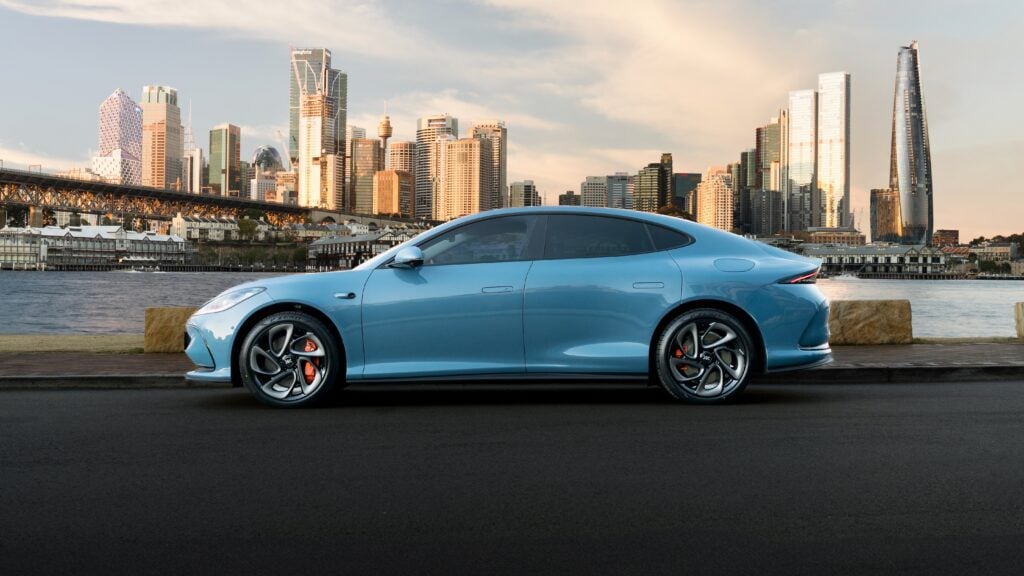
In theory, the facts make no sense. Both male and female human beings are bipedal and dual-armed, with their eyes in the same location in their skulls. Even their brains are almost the same size (men’s are slightly bigger, due to all the useless information about sport rolling around), so how is it possible that women are, statistically, less likely to crash cars than men?
Amateur psychologists and pub pundits will chuckle knowingly and tell you it’s because men are inherently risk-takers and uncontrollable show-offs who are also compulsively competitive, to the point where every red light at an intersection is a potential race start.
There are also plenty of men who will swear as black and blue as their bruises that the figures we so regularly hear being trotted out about who are the safer motorists are simply wrong; there’s no way women have fewer accidents than blokes, because men are simply better drivers.
“Better”, of course, is a highly subjective term, but one ingenious study in the UK last year did a great job of putting this to the test.

Sample groups of male and female drivers were put through a series of in-car tests in one part of the research. In another part, men and women were observed anonymously while negotiating one of the country’s busiest intersections, Hyde Park Corner.
The survey, carried out for a British insurance company, marked the in-car tests out of 30 after assessing 14 different aspects of driving skill, with the women scoring an average of 23.6 points; men scored 19.8.
Unsurprisingly, when it came to tailgating, men were particularly hopeless; driving too close to the car in front 27 per cent of the time, compared to just four per cent of women.
When you think about accident figures we’re often quoted, in which men seem over-represented, this one factor alone could be huge, because rear-enders are far and away the most common crashes on the road, making up as much as 40 per cent of all accidents.
In the UK tests, nearly half of all men approached hazards on the road too fast, compared to only a quarter of women drivers, and more than half all male drivers accelerated through an amber light compared to 14 per cent of females. This pretty much defines “risk-taking behaviour”.
It gets worse if you look at what they defined as “cutting into traffic dangerously”, a habit we’re all familiar with on our roads. Only one per cent of women were guilty of this, compared to 14 per cent of men.
Driving instructor Neil Beeson, who organised the tests, said he was shocked by the results.
“In my experience, men have always been the best learners and usually performed better in lessons,” he said. “However, it’s possible that women have retained the information better.
“What this report shows is that men need to give their female counterparts their due when it comes to driving. The facts don’t lie.”

So what are the facts down under? Well, according to figures released in 2015 by Roy Morgan, a staggering 3,054,000 Australians (some 16 per cent of the population) had been involved in a car accident while at the wheel in the previous five years.
That breaks down to 1,455,000 men (or 15 per cent of the male population) and 1,599,000 women (16 per cent of all women), which means female drivers are three per cent more likely than the general population to be involved in a car accident.
The raw data allows us to point a finger at exactly who are the most dangerous drivers on our roads, and it doesn’t look good for blokes aged 25 to 34, who were a whopping 34 per cent more likely to have been involved in a car crash in the past five years than other Australians.
For women, it’s the slightly older driver you need to be wary of, with those aged 35 to 49 most likely to crash. That age group made up 20 per cent of all women involved in accidents, and it was 28 per cent more likely to have an accident than the general population.
Raw figures are one thing, but these stats put all traffic accidents into one basket, which means a fatal, high-speed crash is statistically the same as reversing into a parked car.
The people who really measure the relative safety of drivers are insurance companies, because they’re betting considerable money on who is more likely to have an expensive crash, and then charging those people accordingly.
As has been pointed out in the advertising of one insurance brand in particular recently, the more questions they ask – i.e. the more they know about your likely driving behaviour – the better they can tailor you a quote.
And the fact is, you’re more likely to get a better deal if you’re a woman than a man (depending on your age), because you’re less likely to make a claim.

A study of 100,000 insurance claims, issued last year by the Royal Automobile Association of South Australia, showed women had made 7000 fewer crash-insurance claims than men in the past two years.
The figures also showed that men had caused nearly two-thirds of all rear-end crashes. Women, on the other hand, were responsible for more minor accidents, making nearly two-thirds of all claims for hitting parked cars.
“The data indicates that women appear to be safer drivers and less likely to cause serious damage,” said Hayley Cain, senior claims manager.
The unfortunate, and tragic, fact about men is that they are more likely to have highly dangerous, high-speed accidents. Australian figures suggest men are as much as four times more likely to be involved in fatal crashes.
In one 12-month period in Victoria (2014-2015), 64 women died on Victorian roads compared to 187 men.
It’s a huge disparity, so what’s causing it?
An oft-quoted survey from the UK’s Automobile Association found that “men drive faster and break the law more often than their female counterparts, and are more likely to be killed”. (The same report mentioned women were twice as likely to be involved in crashes at intersections compared to men).
In terms of driver behaviour, the best people to ask are the police, who see road users at their worst. And, recent figures from Victoria paint an ugly picture for men.

Blokes were responsible for 70 per cent of all speeding, mobile-phone, seatbelt and drink-driving charges over the past three financial years. Men also accounted for four out of five drink-driving offences and seven of every 10 speeding fines.
So women, in general, are driving slower, more soberly and farther behind the car in front, yet they’re more likely to hit objects that are standing still. It seems there’s more to the difference between our brains than a bit of extra weight.
Is it possible, however, that much of the discussion over which sex is safer on the roads, and many of the statistics, are skewed by the fact that men actually spend a lot more time at the wheel and drive a lot more kilometres annually? This would obviously make them more likely to be involved in any and every kind of road incident.
AustraliaSCAN data from 2015 tells us the average Australian car is driven 13,800km a year.
One third of female drivers average less than 10,000km on the road each year, and women are far more likely to drive less than the average mileage.
Some 61 per cent of men drive at least 10,000km a year, with one in four blokes driving more than 20,000km yearly. Just 13 per cent of women claim to drive more than 20,000km annually.
So it’s quite clear that men are statistically more likely to be involved in more road accidents, because they are doing more of the driving (and that’s without factoring in professional drivers in long-distance trucks, taxis, goods vans and other male-dominated transport industries).
Anecdotally, with a lot of couples, particularly on long trips, it seems like men do a lot more of the driving; although in some households the woman might well be the keener driver.
Overall it seems that, no matter how much it might hurt their tender male pride, men might have to accept that statistics – and insurance rates – reflect the fact they are more likely to be involved in accidents, particularly serious and expensive ones, than women.
Blokes can at least argue this is because they’re doing more of the driving.
As for who are actually the better drivers? That’s an argument almost as old as Adam and Eve, but one that men seem to care more about.
The UK survey that tested and observed drivers of both sexes also polled them on who they thought was better behind the wheel. A whopping 87 per cent of men reckoned males were better drivers than the fairer sex, while just 28 per cent of women thought they were better drivers than men.
That means, somewhere in the middle of that survey group, there are bunch of men and women who agree that blokes are the better drivers.



